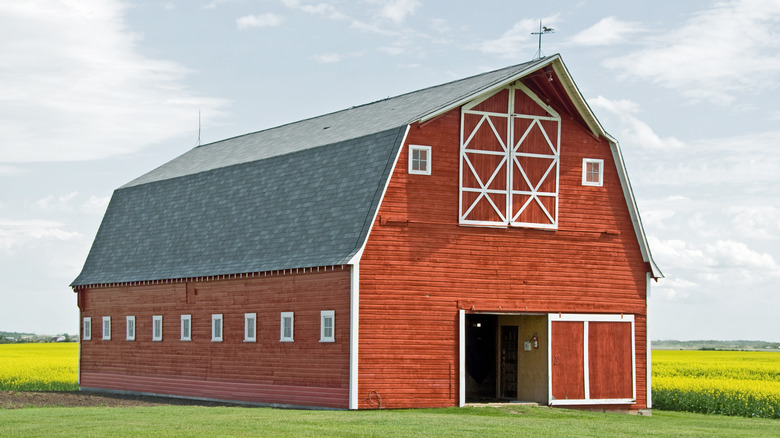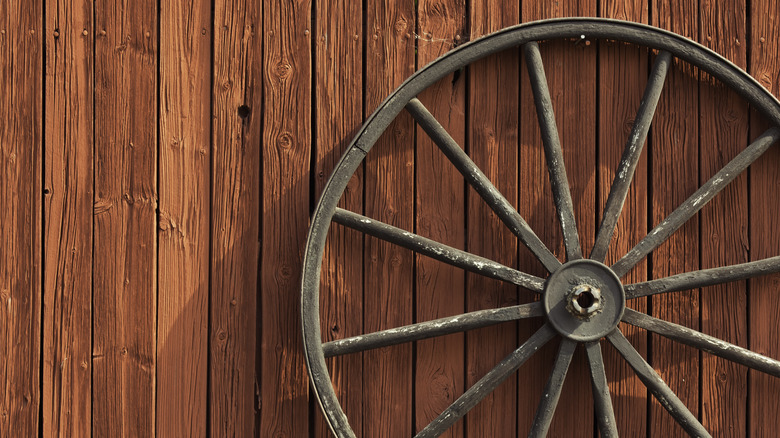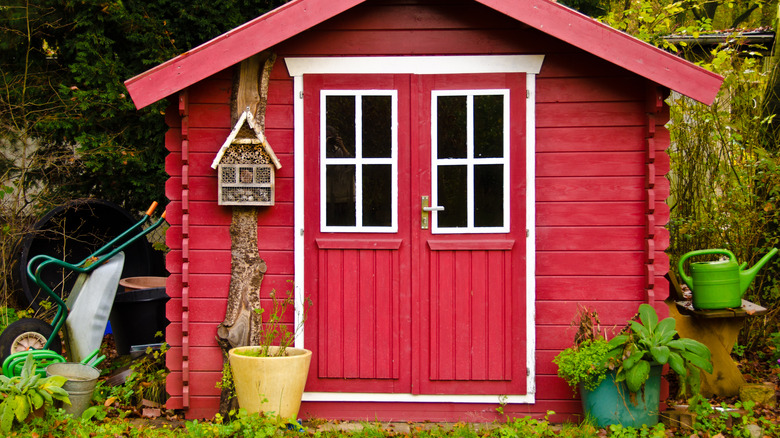Here's Why American Barns Are Traditionally Painted Red
Barns of all sizes dot the countryside on farms and ranches all over the United States. They're essential structures for keeping livestock safe, sheltering feed like hay to make it last longer, and storing farm tools and ranch equipment out of the elements. They don't have to be red (yes, "Yellowstone" barn, we're looking at you), but they often do have a deep scarlet hue. Why is that? The short answer when it comes to both modern barns and historical structures is tradition.
For centuries, red has prevailed as the color of choice for farmers and ranchers making an effort to preserve their serviceable wooden outbuildings. There's no question that other colors can do the same job. However, because red was one of the easiest to achieve (read: most affordable) with available materials back in the day, the hue won out as the top pick for barns. As time passed, the practice stuck and red barns still remain popular today.
More on the earliest red barns
What happens if you don't paint a barn? The wood becomes weathered, turns gray, and eventually starts to break down. Centuries ago, it became commonplace to mix up homemade paint to thwart this type of aging and make barns last for the long haul. The main ingredient was linseed oil mixed with magnesia silicate and red soil containing iron oxide (also known as rust) was added as a colorant. The result was a durable paint that started the preference for red barns.
In fact, "Everybody's Paint Book" by Franklin B. Gardner published in 1884 mentions that Venetian Red was a suitable shade for brickwork and outbuildings. The formula in the book used red ochre, sifted road dust, and resin oil to produce a long-wearing paint for protecting barns, sheds, and similar structures. The color could be changed by adding yellow ochre to the mixture, but most farmers and ranchers stuck with red.
As time passed, paints were developed for commercial sale. By the early 1920s, outlets like the Sears, Roebuck & Co. catalog offered barn paint in a color described as oxide red, as well as maroon, yellow, and dark gray. Even with all the choices available, red stuck as the main color of choice among most farmers and ranchers. And that tradition prevails today.
Getting your own red barn look
While you might not have a huge barn out back, you can still get the look of a farm-style outbuilding by painting your shed. Linseed oil paint is making a comeback, too, even though it's a more expensive choice now in comparison to latex paints. Nevertheless, some eco-friendly consumers are willing to pay more for this type of premade paint since it is produced without chemicals.
Another advantage is that linseed oil paint penetrates wood instead of simply adhering to the surface. This creates a finish that withstands both sun and rain very well and does not chip away over time. When it needs to be refreshed, you just add another coat of paint without having to prep the wood.
If you'd rather go the less expensive route, modern latex paint comes pre-mixed in barn red colors. Many of the major manufacturers sell what is marketed as barn and fence paint, in fact. The color, as you probably guessed, is the deep red shade that comes to mind when envisioning a traditional barn.


